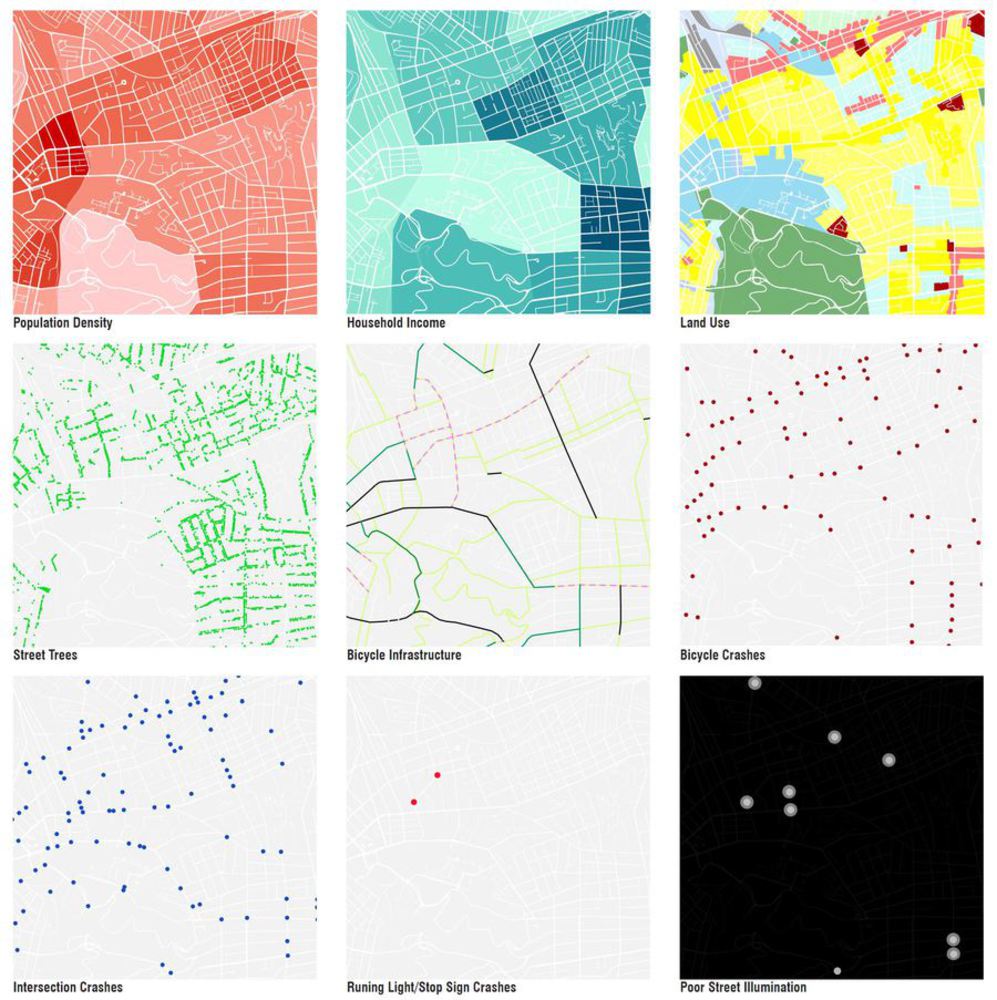Collection
1) Population Density: To indicate the possible intensity of activities in and around the neighborhood by population density, which may also indicate a potential cycling population.
Source: American Census Survey, American Factfinder, Population by Census Tracts, Pittsburgh Metro Area, 2015, 5-year estimate.
2) Traffic Signal Controlled Intersection: To reflect the urban traffic control infrastructure at intersection.
Source: SWPRDC, Pittsburgh Traffic Signals, link: https://data.wprdc.org/dataset/pittsburgh-traffic-signals
3) Household Income by Census Tract: To indicate the demographic of potential cycling population, although not knowing where cyclists come from and go, it still give a sense the crashes happen in what type of neighborhoods.
Source: American Census Survey, American Factfinder, Estimated Household and Family Income by Census Tracts, Pittsburgh Metro Area, 2015, 5-year estimate.
4) Pittsburgh Street Tress: To explore if any correlation between street scape and crashes location.
Source: SWPRDC, Pittsburgh City Tree Inventory, link: https://data.wprdc.org/dataset/pittsburgh-city-trees
5) Bicycle crash data,
Source: SWPRDC, Allegheny County Crash Data, link: https://data.wprdc.org/dataset/allegheny-county-crash-data
6) Bicycle Infrastructure Suitability: The map data was record by physical improvement of bicycle infrastructure and cyclists’ perception regarding the cycling safety on certain street. It could indicate the street condition regarding cycling safety, and show whether there is a correlation with crashes.
Source: BikePGH & Lu Zhu, link: https://data.wprdc.org/dataset/allegheny-county-crash-data
7) Land Use: To explore the location relationship between land use type and bicycle crashes.
Source: Pennsylvania Spatial Data Access, http://www.pasda.psu.edu/
Codes Used
The majority of data processing, including density calculation, data filtering and sorting, etc., was done in ArcMap through attribute table manipulation. There are limited coding data filtering process involved, except sorting out necessary data columns for exporting to csv file format purposes. The general code for extracting household income and order them by ascending order include following:
Select household_income/hc01_est_vs13
From ACS_10_5year_S1901Simplified
Order By household_income/HC01_EST_VS13 ASC
However, excel might be easier to do this part of work.
